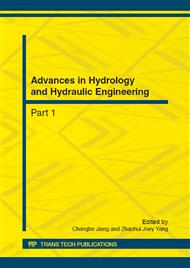p.3
p.10
p.20
p.25
p.33
p.40
p.46
p.50
On the Suspended Sediment Concentration Profile
Abstract:
After analyzing the surface-boundary condition of suspended sediment concentration (SSC), Cheng et al.[7] further improved the sediment diffusion coefficient which was proposed by Bose and Dey[6]. Then an improved Rouse law (IRL) was developed. This equation, which has a similar form as Rouse law, not only overcomes the zero concentration at the free surface, but also behaves generally better than Rouse law and van Rijn equation over the whole water depth in the verification analysis. In this paper, the surface-boundary condition of SSC is further analyzed. It is elucidated that IRL satisfies the surface-boundary condition more reasonably than Rouse law. In addition, a first-order approximation of IRL is developed. From this approximation, we can easily get the explicit expression of the depth-averaged SSC without any implicit integrals to be solved numerically or by the help of a chart. This is very useful in the further study of non-equilibrium suspended sediment transport (SST).
Info:
Periodical:
Pages:
20-24
Citation:
Online since:
October 2012
Authors:
Price:
Сopyright:
© 2012 Trans Tech Publications Ltd. All Rights Reserved
Share:
Citation:


